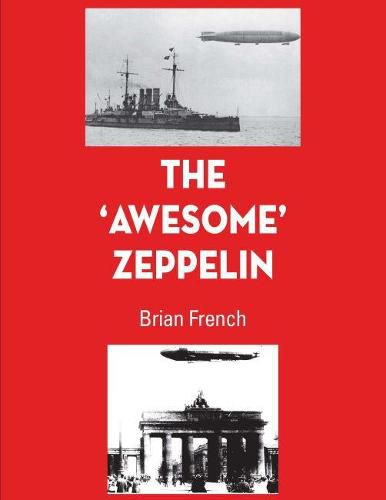Readings Newsletter
Become a Readings Member to make your shopping experience even easier.
Sign in or sign up for free!
You’re not far away from qualifying for FREE standard shipping within Australia
You’ve qualified for FREE standard shipping within Australia
The cart is loading…






Around the time that tentative steps were being taken to develop the first airplane, Count Graf von Zeppelin introduced his ‘dirigible’ in 1900. This huge motor driven rigid balloon became an ongoing business proposition in Germany, but would soon to be weaponised by Kaiser Willhelm II as a bomber in the 1914-18 conflict. Initially, this ‘awesome’ airship was unstoppable by any conventional armament. Its weakness was that it was always susceptible to adverse weather conditions, being easily blown off course and, as it was powered by volatile hydrogen gas, was just as easily blown up. Eventually, Britain upped its defences and the Zeppelin was defeated, but not before it had terrorised the inhabitants of many UK towns and cities - London in particular. Post WWI, by some astute dealings by Prof Hugo Eckener, the Zeppelin continued to be manufactured again for commercial purposes in both Germany and the USA. Despite the tragedy of the Hindenburg in 1937, the Zeppelin (NT) is still flying from Friedrickshaven where the story began.
$9.00 standard shipping within Australia
FREE standard shipping within Australia for orders over $100.00
Express & International shipping calculated at checkout
Around the time that tentative steps were being taken to develop the first airplane, Count Graf von Zeppelin introduced his ‘dirigible’ in 1900. This huge motor driven rigid balloon became an ongoing business proposition in Germany, but would soon to be weaponised by Kaiser Willhelm II as a bomber in the 1914-18 conflict. Initially, this ‘awesome’ airship was unstoppable by any conventional armament. Its weakness was that it was always susceptible to adverse weather conditions, being easily blown off course and, as it was powered by volatile hydrogen gas, was just as easily blown up. Eventually, Britain upped its defences and the Zeppelin was defeated, but not before it had terrorised the inhabitants of many UK towns and cities - London in particular. Post WWI, by some astute dealings by Prof Hugo Eckener, the Zeppelin continued to be manufactured again for commercial purposes in both Germany and the USA. Despite the tragedy of the Hindenburg in 1937, the Zeppelin (NT) is still flying from Friedrickshaven where the story began.